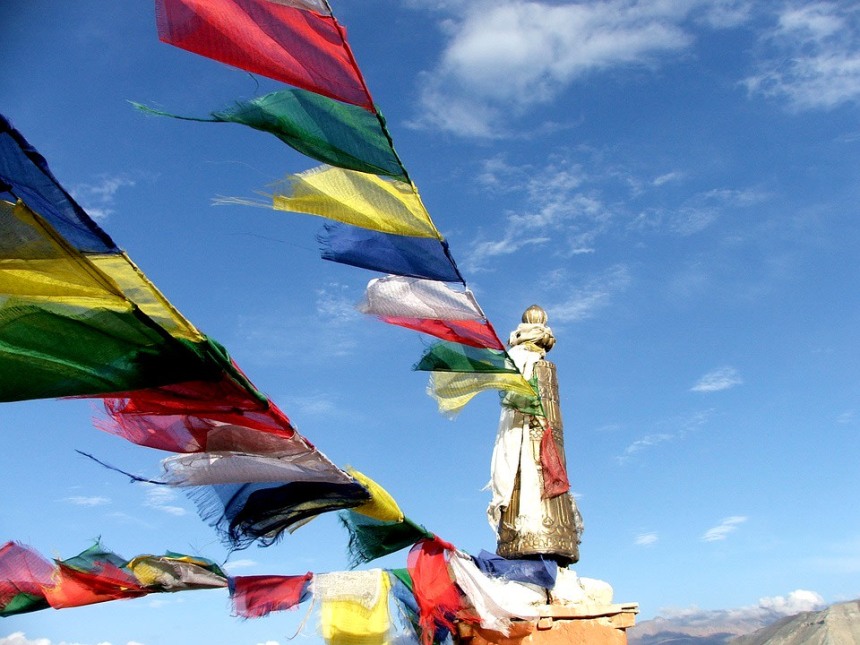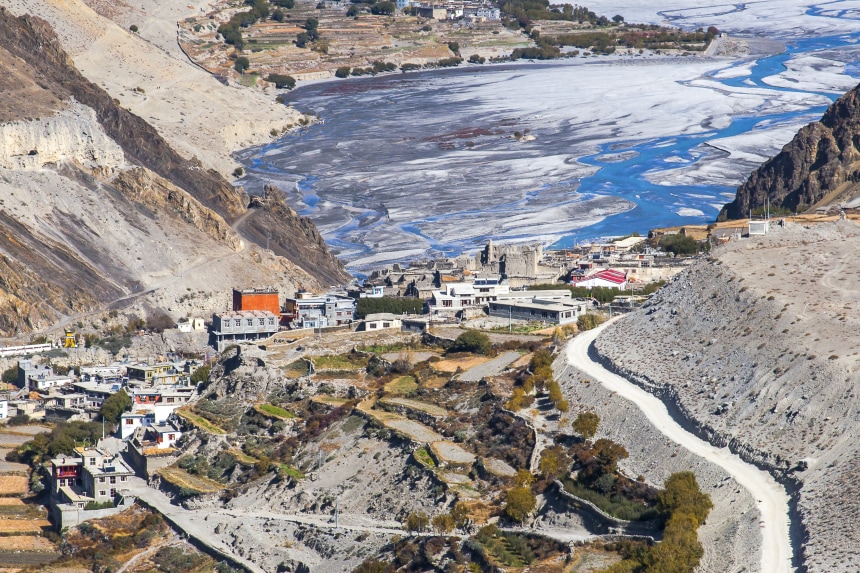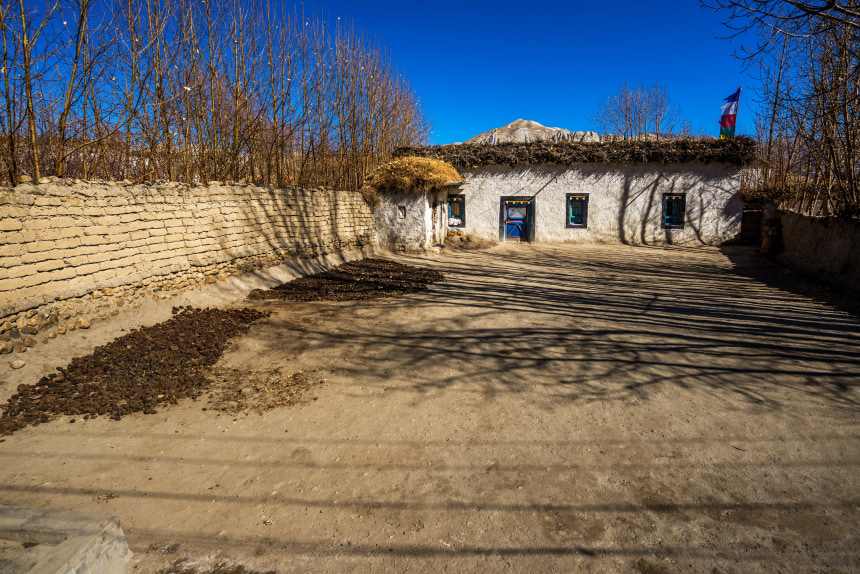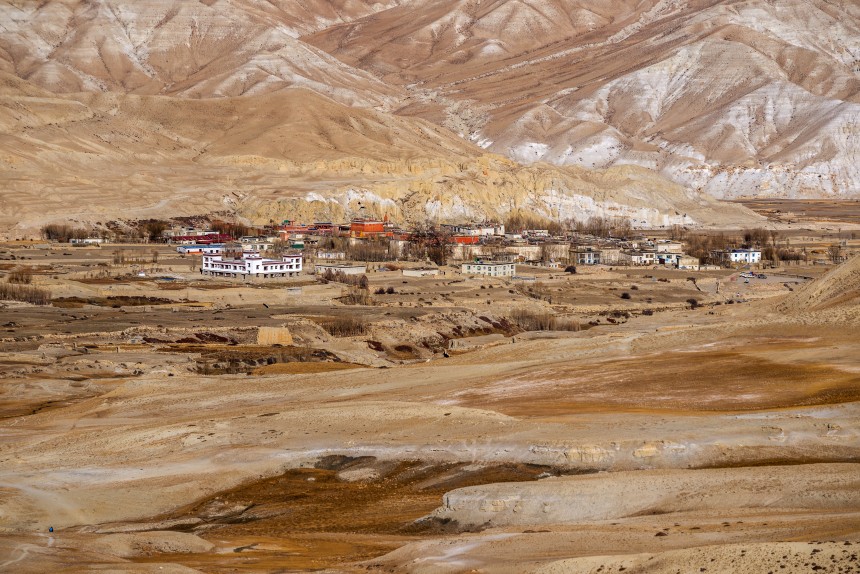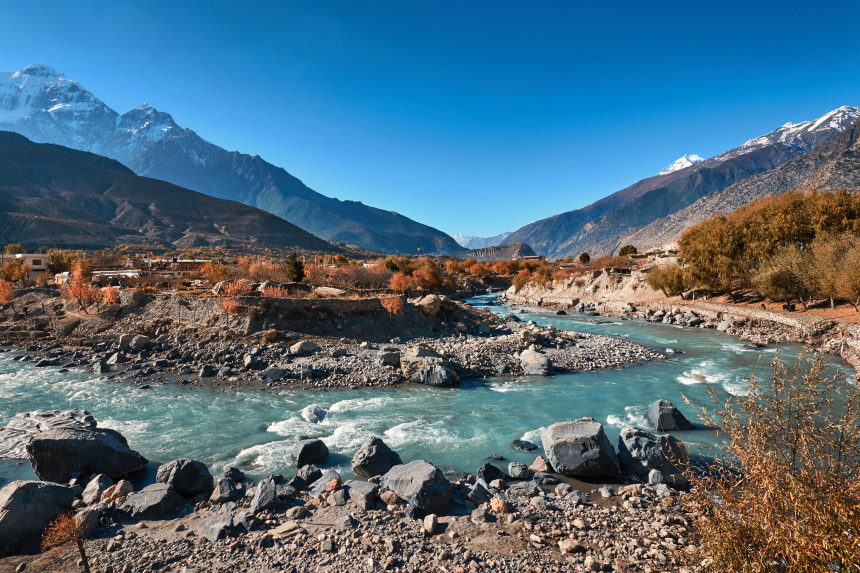| 6 mins read
By Jordan Higgins
The Upper Mustang region of Nepal only opened up to foreign visitors in 1992. As a result, it remains one of the most untouched and isolated areas in the Himalayas.
Located on the Tibetan Plateau, Upper Mustang is a trekking haven, boasting staggering views unlike any others in the Himalayas. This article aims to provide you with the knowledge you need to embark on a trek across this enigmatic area.
Permits, Fees, and Costs
Before thinking about routes, equipment, and accommodation, you must first undertake the less glamorous task of obtaining permits and considering costs.
There are strict regulations in place for foreign visitors in Mustang, which help the area maintain its unique culture and unspoiled beauty. Tourists must pay for two permits to visit the region. These may cause a headache, but their value will become clear when you step into the pristine mountainous paradise.
Below are the permits you will need, as well as their prices:
Upper Mustang Restricted Area Permit: US $500 for your first ten days. Every day after that costs extra US $50.
Annapurna Conservation Area Permit: The permit costs 2,000 NPR (around US $20) for European and American tourists. For SAARC citizens the fee is only 200 NPR (around US $2).
These permits can be purchased through the Nepal Tourism Board at their office in Kathmandu, or over the telephone. Following Nepalese laws, you must also be accompanied by a Nepali guide or porter. Most travel guides recommend hiring a porter to carry your equipment. If you choose to book your trip through a private tour operator, they can organise all of this for you.
Most companies will offer tours ranging from 14 to 32 days. These tours typically include accommodation, food, permits, airport transfers, some equipment, and a guide or porter. For an all-inclusive trip, you can expect to pay between $1500 and $3500, depending on the length of your stay.
If you are organising the trip independently, you can find accommodation in teahouses for between 300NPR and 500NPR (approximately $3 - $5) per night. Most teahouses offer hot showers, bedding, and internet access, with meals costing an extra 200NPR each. You should budget around 2000NPR per day for all expenses. There are ATMs in larger towns, such as Lo Manthang, but it is advised that you bring cash for smaller settlements.
Equipment
Next, it’s time to make a packing list. This list is a simple guide of essentials; it should be altered to suit your specific trip.
Firstly, you should consider when you will be visiting, and pack accordingly. Trekking is not advised in the two coldest months, December and January. October is the most popular month for travellers.
Regardless of the season, you should pack several polypropylene shirts, both long and short-sleeve. A waterproof, softshell rain jacket is a must, as well as an extra, warm jacket.
You will need hiking shorts and trousers, thermal bottoms, and a pair of waterproof, breathable trousers. Again, this should be tailored to your own individual trip.
For footwear, you need thick wool hiking socks and some thinner lightweight socks. Durable and waterproof hiking boots are necessary. You should break your boots in ahead of time; your feet will thank you after! Finally, bring comfortable shoes for when you are not hiking.
You may also need a warm hat, sunglasses, a headlamp, a sleeping bag, first-aid kit, medicine, a towel, waterproof gloves, a lighter, a penknife, water bottles, and disposable bags.
All of this should fit inside a medium-sized rucksack of about 50l.
Arrival and Transport
The only international airport in Nepal is Kathmandu, so this will probably be your starting point. From Kathmandu, you travel to Pokhara by plane or bus. Flights from Kathmandu are frequent and quick, taking less than one hour. Next, you move to the town of Jomsom. Again, this can be done by plane or bus. Then it’s a short trek to the village of Kagbeni.
Most private tours include transfers to/from Kathmandu in the overall price, so it is worth considering this when planning.
Travel Itinerary
The main Upper Mustang trail follows an ancient salt-trading route, where salt was historically exchanged between India and Tibet. The average trek lasts 10 to 14 days, including two extra days in case of unexpected delays.
Below is a sample day-to-day itinerary, including several of the best places to visit during the trip.
1: Kagbeni to Chele
This stretch takes you along Kaligandaki, the deepest gorge in the world. You will end your day in Chele, a remote village 3000m above sea-level.
2: Chele to Geling
The trek to Geling includes a view over Chele La, a famous 3810m mountain pass.
3: Geling to Charang
This section takes you across Nyi La, a secluded pass 3932m above sea-level. From here you descend to Charang at 3560m.
4: Charang to Lo Manthang
This trek will bring you to Mustang’s capital, Lo Manthang.
5: Explore Lo Manthang
You will spend one-day exploring Lo Manthang’s Royal Palace, Jampa Gompa temple, and Chöde Monastery.
6: Lo Manthang to Dhakmar
After your day off, you will trek to Dhakmar. This stretch takes you across the Marang La Pass, 4230m above sea-level.
7: Dhakmar to Syangmoche
This leg takes you through Ghami and Geling. Here, you will find views of Nilgiri Himal, three peaks in the Annapurna Massif, all over 6800m.
8: Syangmoche to Chusang
En route to Chusang, you will pass through Samar, a small village primarily influenced by Tibetan culture.
9: Return to Jomsom
Many tours also include stops at the Garphu monasteries, Bhaktapur, and the Sky Caves along Kali Gandaki. There are dozens of options for additional stops. On the other hand, if you have less time, or don’t feel physically able, you can cut stops out.
Until 2008, Mustang was considered an independent kingdom, isolated from the surrounding world. Because of this, a trek through this mystical region is unlike anything else in the Himalayas, hence the lofty price tag. But can you really question that price for a trek that begins with a view of 8 of the world’s tallest 20 mountains?
Jordan is a student journalist and avid traveller. He has a strong interest in Asian countries but will never say no to a European excursion. He is particularly fond of (although not very good at) trying new outdoor activities and adventure sports.


